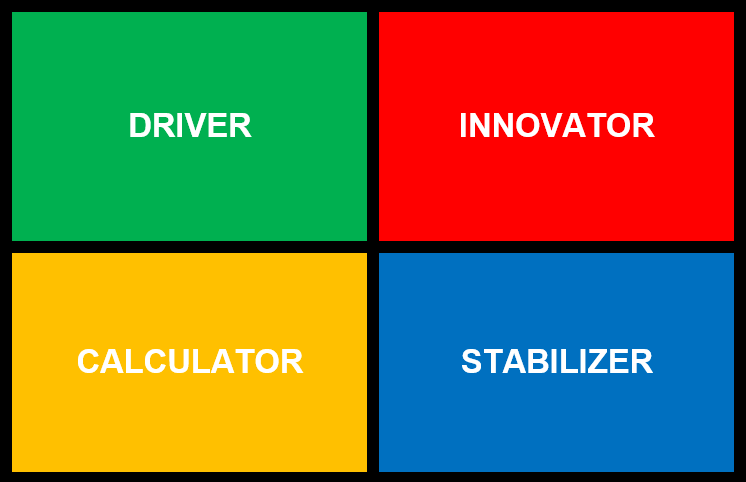In yesterday’s Advisor, training expert Brad Karsh elaborated on four distinct personality types (Driver, Calculator, Innovator, and Stabilizer) and what they each want. Today, Karsh describes how to navigate teams of these diverse personalities—and why the Golden Rule might not be the best policy at work.
 |
Karsh, who is president of JB Training Solutions and author of Manager 3.0: A Millennial’s Guide to Rewriting the Rules of Management, shared his tips at the Society for Human Resource Management’s (SHRM) Annual Conference and Exposition held recently in Las Vegas.
Here are the four boxes that most workers fit into (see yesterday’s Advisor for the qualities, strengths, and pitfalls each persona gravitates toward):

The personas differ in the way they react to conflict and pressure, explains Karsh, and they also differ in the way they react to each other.
Web-Based Training Courses for Supervisors and Employees: Professionally Developed, Up to Date, Engaging, and Ready to Use! TrainingToday Communicating Effectively at Work Library
Decision Making and Conflict
Pointing to the top two boxes, Karsh notes that these are your fast decision makers—the Drivers and the Innovators. The two lower boxes, the Calculators and Stabilizers, tend to make decisions more slowly.
When a conflict occurs or pressure is applied, the reactions of each type differ, but can be anticipated and managed:
- Drivers will want to seize control. If they have trust issues with their teams, micromanagement by Drivers can be a problem, warns Karsh. How can you help them? Have a plan, to the extent possible.
- Calculators will fall into their comfort zone of systems, processes, and techniques. Be careful that they don’t fall into analysis paralysis, advises Karsh, and help them out by having as many answers at the ready as you can.
- Innovators may underestimate the problem at hand—but if you create urgency for the Innovators, they will thrive under pressure, says Karsh.
- Stabilizers don’t like conflict. They will try to avoid it, and there’s the possibility that they may get flustered. How can this be managed? Provide reassurance, says Karsh.
As far as conflict between team members, Karsh once more referred to the boxes above—the most conflict will occur between the diagonals of the chart. That is, your Drivers and Stabilizers will often be at odds, as will the Innovators and the Calculators.
However, Karsh is quick to note that if all four types take the time to understand each other’s styles, wants, and needs, they will make up the very best of teams. He adds, if they don’t understand each other, they will become the worst of teams.
So, What Does Your Team Want and Need?
Of course, each team member is going to have a different set of wants and needs, says Karsh:
- Your Drivers want authority, and they need options.
- The Calculators want certainty; they need proof.
- Innovators want attention, and need originality.
- Stabilizers on the team want security, and they need consensus.
Each course in our extensive TrainingToday Communicating Effectively at Work Library addresses a specific topic with engaging and interactive presentations, delivering practical advice and clear instructions that trainees will remember long after the training is complete. Get the details.
The Golden Rule of Teamwork
A good group is going to have a little bit of everyone, says Karsh. Know your team, celebrate differences, and play to your people’s strengths.
As a final relationship management takeaway, Karsh says to remember this: The Golden Rule (do unto others as you would have done unto you) may be a great rule to live by, but it may not be the best way to work in a group. On a team, do unto others as they would like to have done unto them.

Yes…I’ve heard about this idea before.
The concept beyond the Golden Rule….Treating others as THEY would like to be treated…..Call that the “Platinum Rule”
Thanks
Thanks for your comment, Tim! I like the “Platinum” idea …